I’ve had a wide variety of models in front of my lens in the past nine years—from the tiniest to the largest ones, short- and long-haired, for show or for sport: I’m a dog photographer! Here, I’ll share my top tips for capturing great photos of some of the most adorable models in the world. Here’s what will make your dog photography experience much easier.
1. Remember: Your model isn’t a human!
The most important thing to remember during a photo session with a dog is that we are photographing… a dog! It sounds obvious, but believe me, it is not. Even the perfect lighting, composition, and scenery produce a good photo if your model looks bored, tired, or scared. To avoid taking just-shy-of-perfect pictures, prepare well ahead of the photo session. Here’s how.
2. A good attitude starts with you
Choose a safe location and make sure you have lots of time. Working under a rushed deadline with stress will certainly affect your model. A good attitude is essential here; don’t be overly ambitious, but trust that at least a few of your shots will turn out perfectly.
3. Flexibility is your best plan of action
I’m not a believer in accurate frames planning: it can result in prioritizing the shot over the dog’s comfort and safety. I prefer to improvise and rely on my model’s ideas. Of course, it is sometimes hard to resist the temptation of planning when I see my dream location. But we need to maintain a healthy dose of flexibility.
4. All models need motivation
Now, back to our model. Just like human models, we can’t expect them to pose for us “for free”—we have to have something to motivate them. For your dog, that could be his favorite treats (unfortunately, those always seem to be the ones that have the worst smell) or favorite toy (squeaker toys are perfect for attracting attention). It’s also a good idea to ask the owner what the best way to work with the dog is, and find out what would be the most enticing thing to bring.
5. Keep moving
Arrange everything in a way that it doesn’t require your furry model staying motionless for too long—it’s just unnatural for animals to stay still. Also, taking photos can be really exhausting for both you and dog, so remember to take breaks and limit photo sessions to 2 hours maximum. For some, one hour is more than enough, while others can keep up for a whole day and still be in a great mood.
What’s more, you can’t force a dog to hold a certain pose, or only move when we want him to. Encouraging him with a treat or toy will work much better—you will capture a focused or happy dog’s face, instead of scared eyes saying “big human told me to stay like this.”
6. Think like a dog
If you want to photograph dogs, you need to mentally become one. Learn to rely on your instincts, as they help make the most of every decisive moment. The important thing is to get low in order to achieve a unique perspective from the animal’s point of view. Animals are the most unpredictable models, so you need to be quick if you want to capture the spirit of the moment.
7. Let personality be your guide
Aim for photos that not only are aesthetically-pleasing, but also say something about the dog—find scenery that matches their spirit, or try to capture the dog in their own world. For example, if you have a young and cheerful model, let him play or dig a hole. Have a show dog? Take him to a town’s old, architectural streets to emphasize their elegance. Also, don’t be afraid to capture white dogs on a white background and black dogs on black. It may not be the easiest task but the result can be indescribable!
8. Gear matters
Gear is not the key to capturing great photographs, however, it does matter and may be very helpful. Dogs are incredibly fast creatures and that is why quick autofocus becomes very important, as well as a decent amount of frames-per-second capability in your DSLR. Since there are a lot of camera lenses to chose from, I like to pick wide-aperture ones for a fabulous bokeh effect. In addition, I like to have a tele-zoom lens with me in case some real action occurs.
Tried any of these tips? Share your favorite dog photos in the comments below!

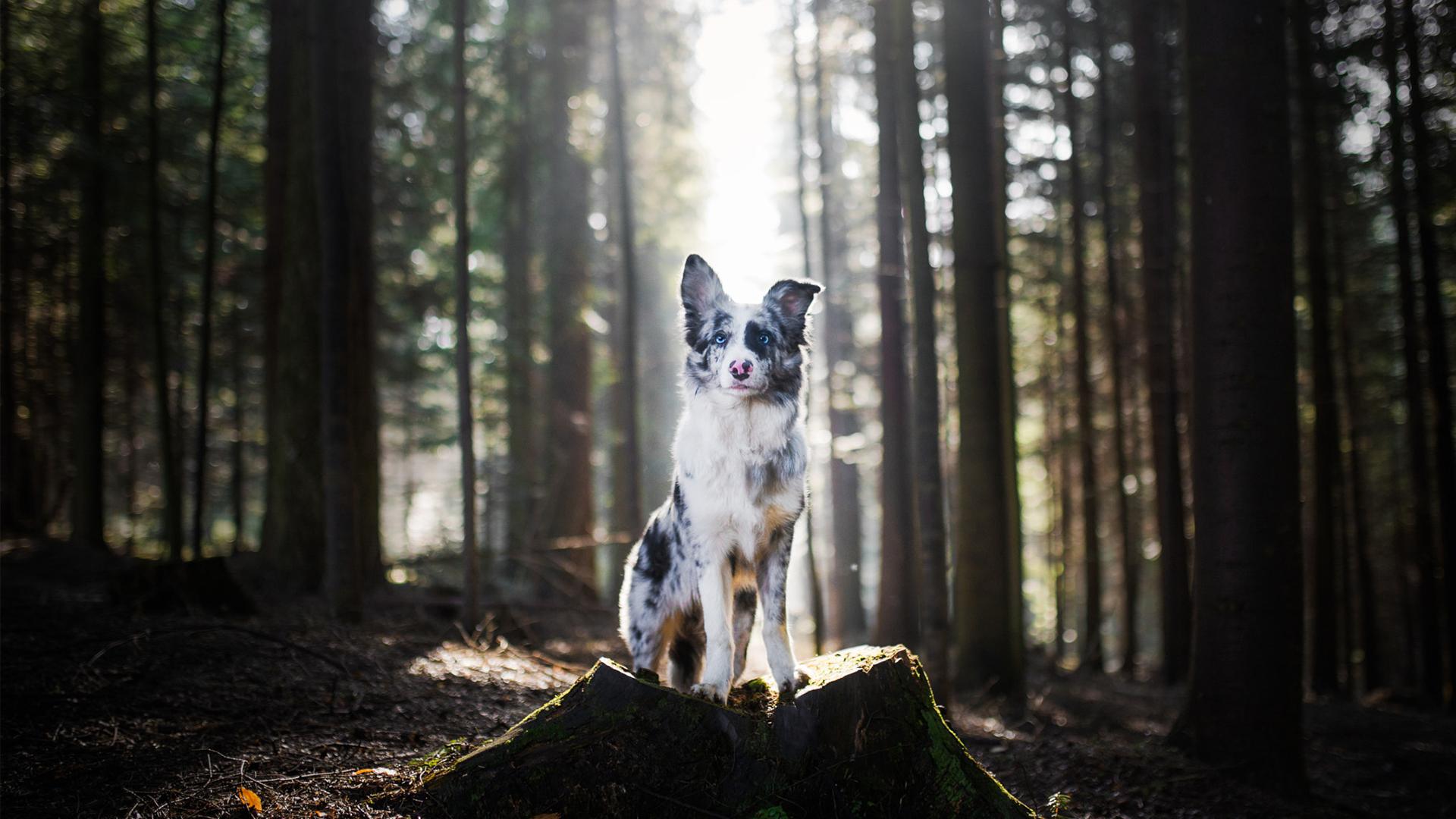





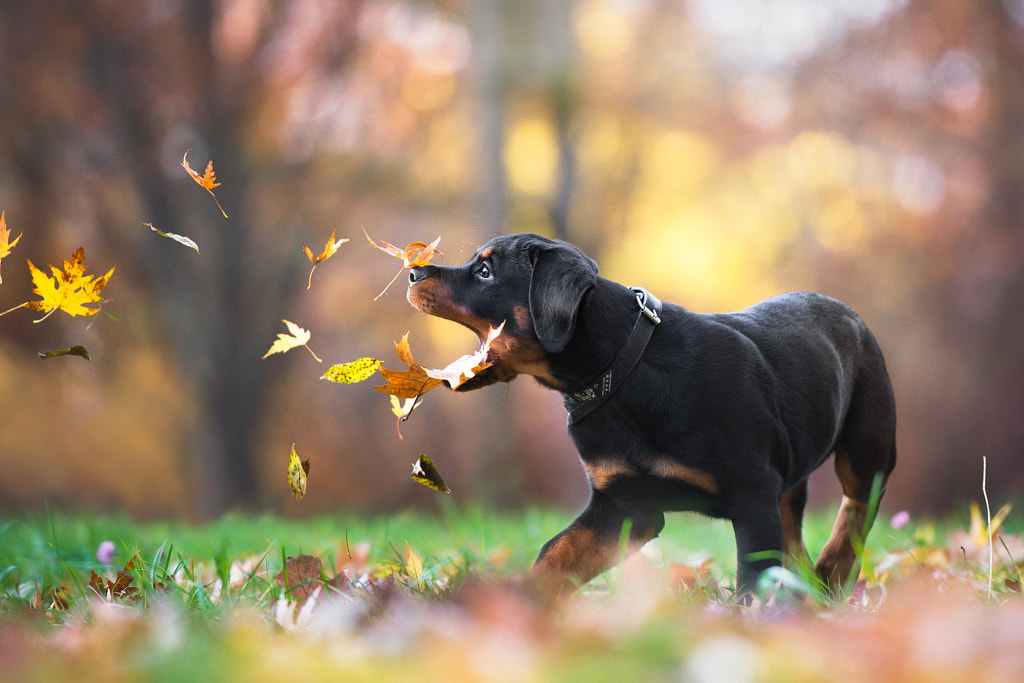
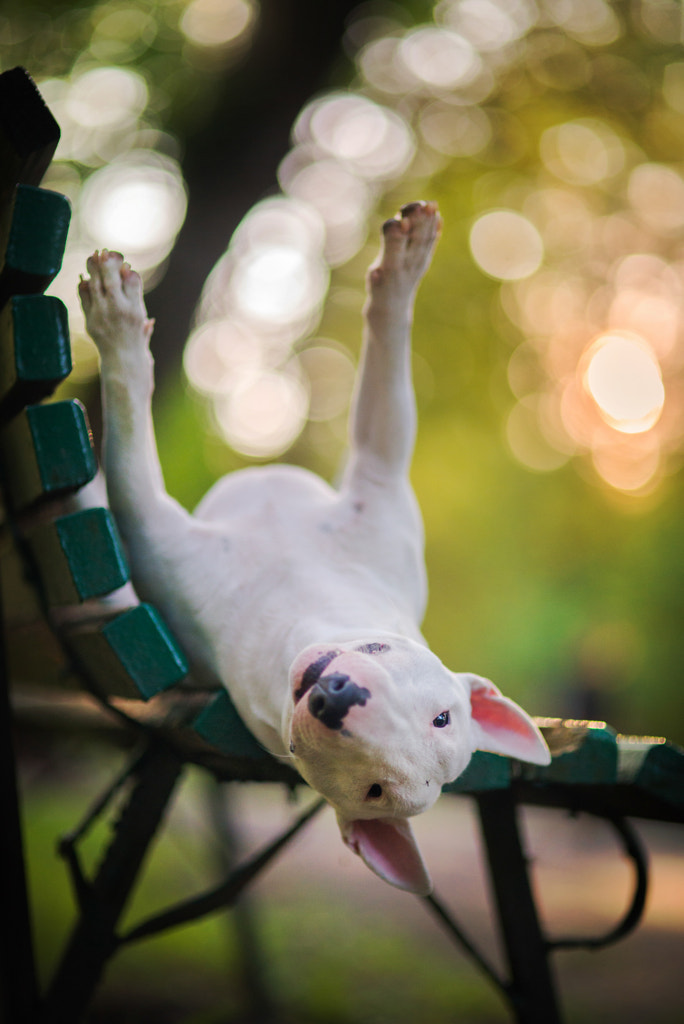
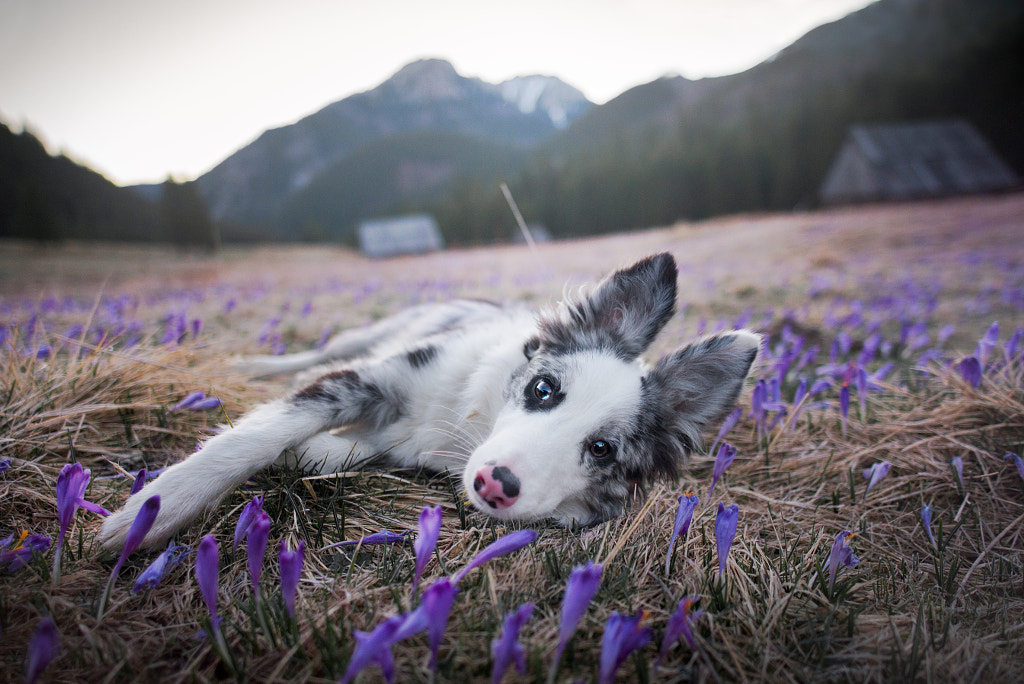
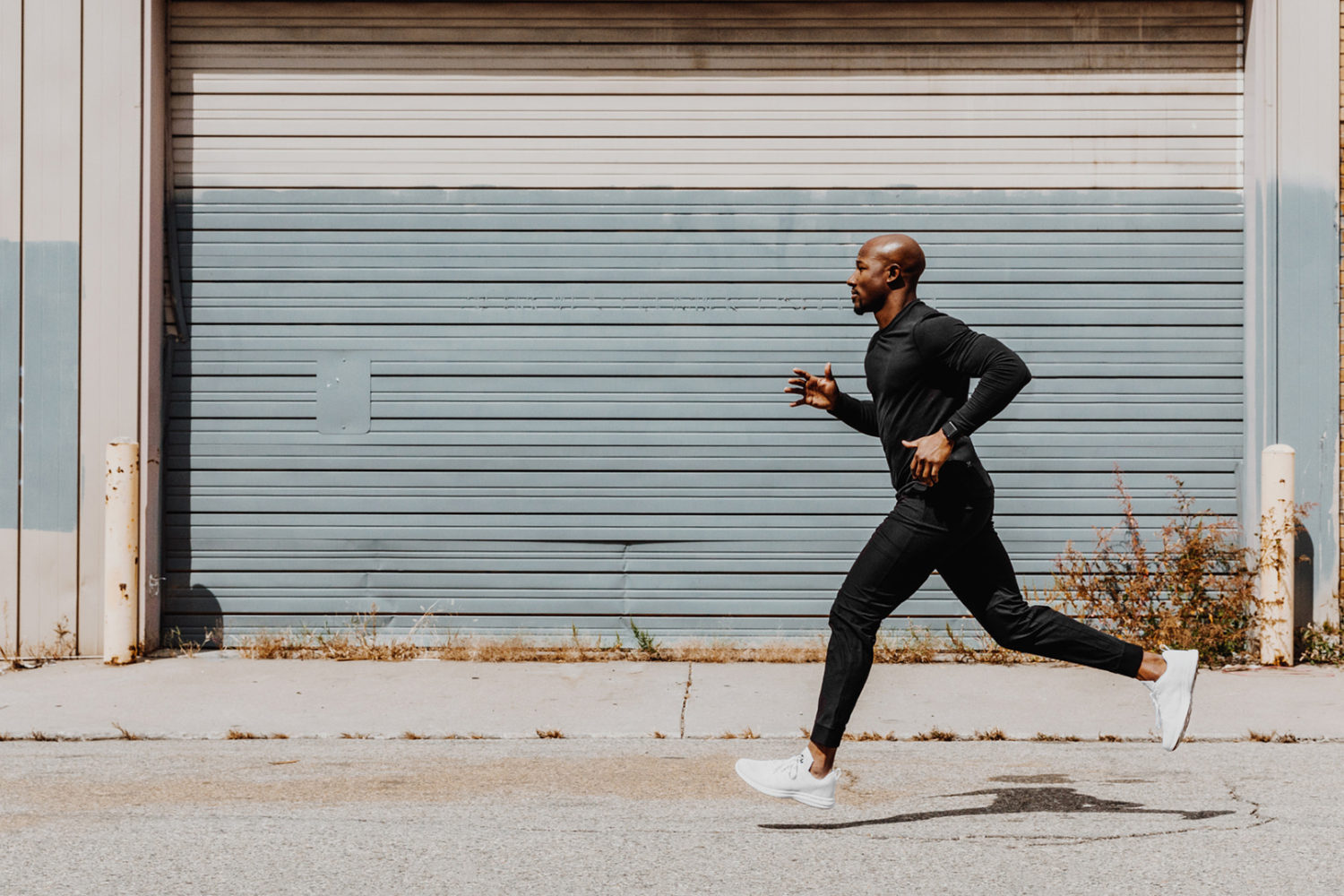
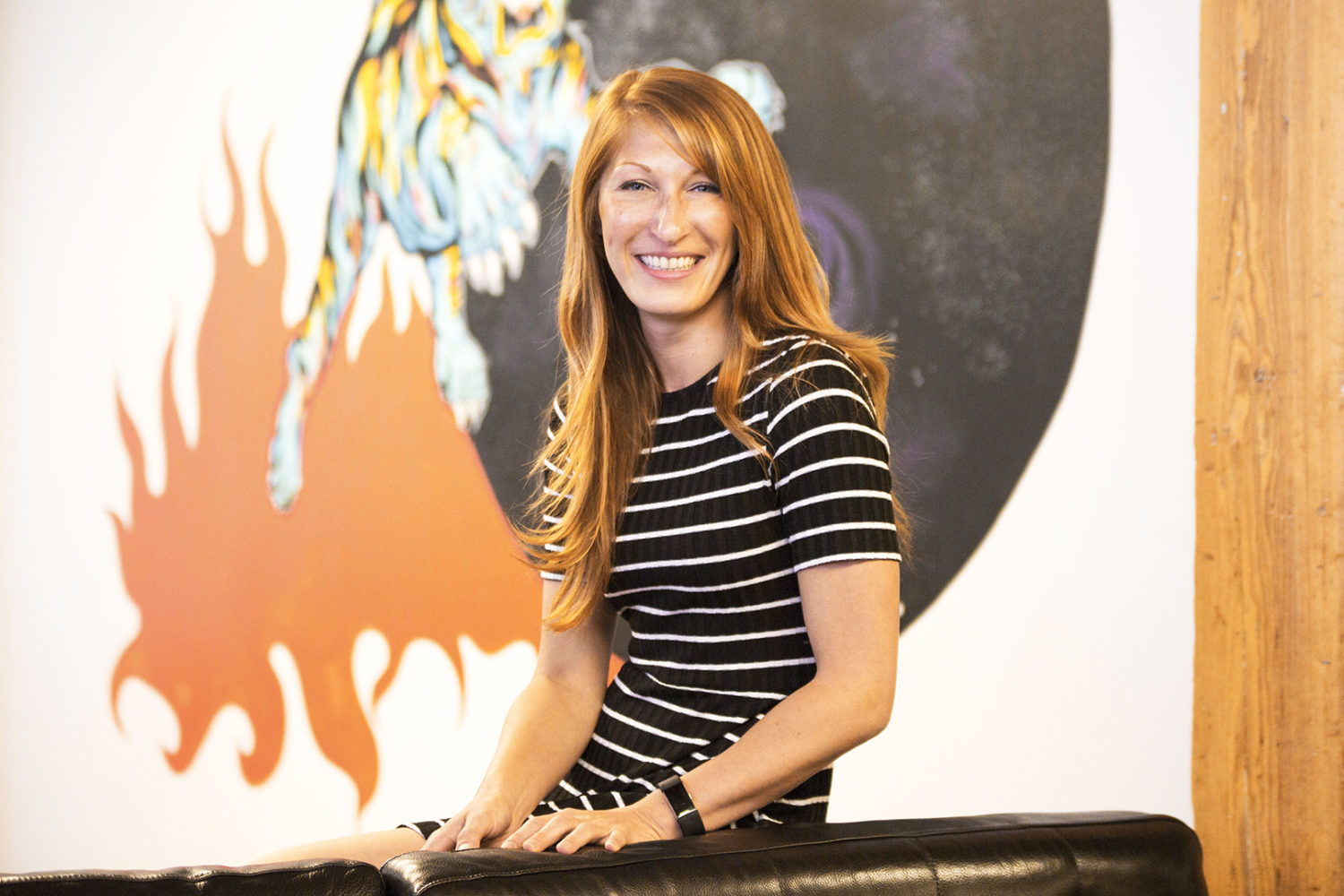



Leave a reply